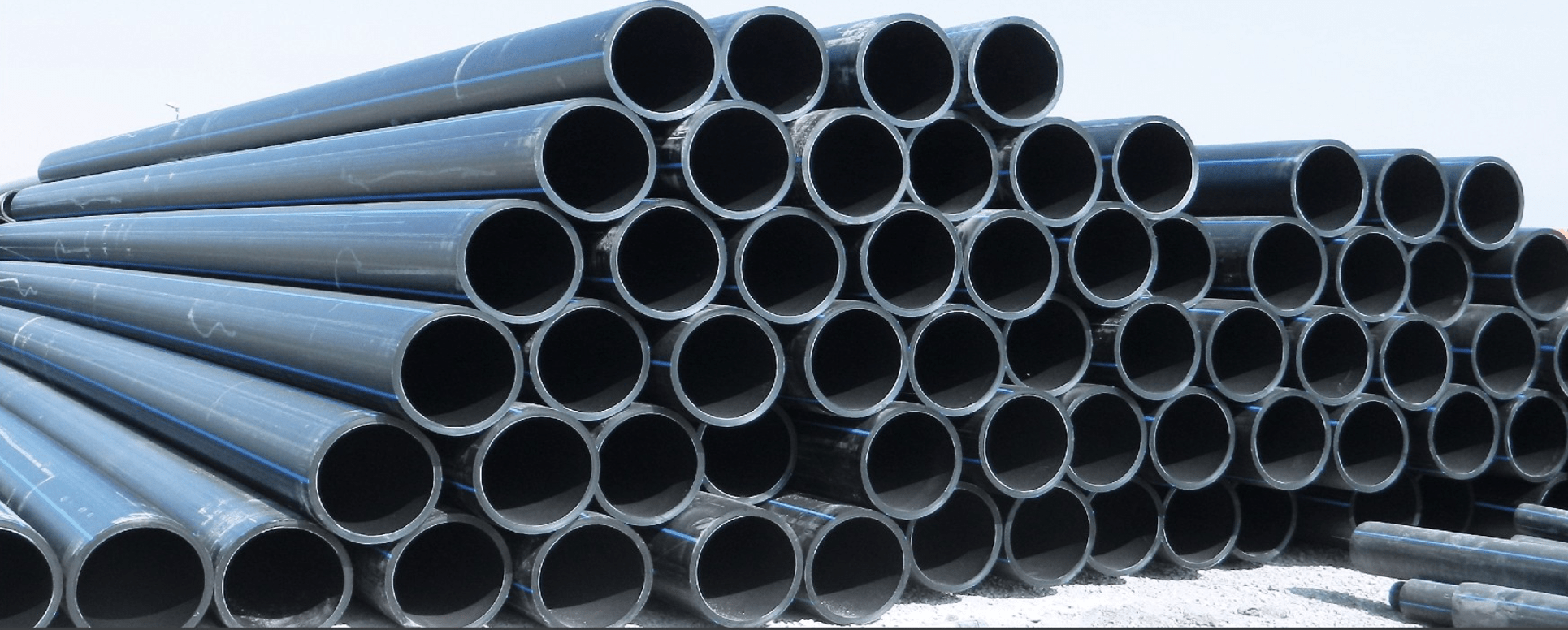
P 100 Pipe System
The rapid development of plastic technology has led to significant developments in raw material production. Pipes made of PE 32, 40 and 63 are used successfully in systems that do not require high pressure. However, these materials have found the opportunity to be used only in systems requiring low pressure due to their technical characteristics. Developed as a result of long research and studies, PE 100 is the strongest PE pipe material developed to date, resistant to high pressure. At the same operating pressure and diameter, PE 100 pipes have a thinner wall thickness than PE 32, PE 40, PE 63 and PE 80 pipes.
However, these materials have found the opportunity to be used only in systems requiring low pressure due to their technical characteristics. Developed as a result of long research and studies, PE 100 is the strongest PE pipe material developed to date, resistant to high pressure. At the same operating pressure and diameter, PE 100 pipes have a thinner wall thickness than PE 32, PE 40, PE 63 and PE 80 pipes.
.jpg)
The biggest advantage of PE100 is its high tensile strength and safety factor. For example, the permissible working pressure of the pipe produced from PE 80 raw material according to SDR 11 is 10 bar, while the working pressure of the pipe produced from PE100 raw material is 16 bar. In other words, pipes produced with PE 100 provide the opportunity to work at higher pressures with lower wall thicknesses. While product quality increases in pipes produced with PE100, up to 30% material savings and economy are achieved.
MASSPIPE is produced according to TSE EN 12201-1 2012 with the assurance of PE 100 pipes with these superior features. PE 100 PIPE ADVANTAGES • It is not affected by earthquakes with its elastic structure. It dampens elongation in landslide areas. • Maintains its elastic properties even when temperatures drop to -40 °C. •Can be used as a coil at the construction site. • It shows high resistance to chemicals. It does not corrode. • It has high abrasion resistance. It cannot be pierced. In addition, there is no carcinogenic effect since there is no molecule transfer to the fluid. •There is no corrosion due to the fluid inside and the soil structure outside. • Since its density is 0.956 gr/cm3, it is 8 times lighter than steel. • It can be combined outside the channel and left in the channel later. It reduces the amount of excavation. • It does not need to gradually dig the ground sensitively. • It is very suitable for river, lake and sea crossings. •With its flexible feature, it can turn with a radius of 20-35 times the pipe diameter without the need for elbows. •It is resistant to ram blows. • It can be combined with butt welding without using fittings.
PIPELAYING RULES Laying rules of PE pipes DIN 19630, DIN 4033, DIN 18300 and EN 1610 standards. After the pipes are welded outside the channel, they can be lowered into the channel. Here it is important to keep the channel excavation narrow. _ Pipes should not be crushed under any circumstances. _ The use of pipes that have been damaged during transportation or storage (damaged by pointed tools or stone-like materials) should be strictly avoided. _ There should be absolutely no underground water or rain water accumulation in the channel. (If there is a puddle in the channel, the water should be drained with the help of a pump.) _ Non-adherent sand, gravel, mixed-grain mixed sand and gravel are suitable for use as channel filling material. (DIN 19630 standard.) _ The channel depth should be at least 70-80 cm. _ If the excavation soil is suitable for filling, the pipe can be laid directly on the duct base without the need for bedding. If the excavation soil is not suitable for filling (stony, wet etc.), the channel depth should be increased and bedding should be made with dry filling material (eg sand). _ The bedding thickness to be made should be minimum Al = 100 mm + 1/10 DN. It should be compressed over the bedding material with the help of a light-weight compactor until 95% strength is achieved. _ Pipe side fills A2, 30 cm thick, poured with a light compactor it should be compressed again by 92 – 95%. This process should be continued every 30 cm until it passes 30 cm above the pipe. _ After A3 = 30 cm over the pipe, the filling process should be completed by compacting it with a medium power compactor.
.jpg)
